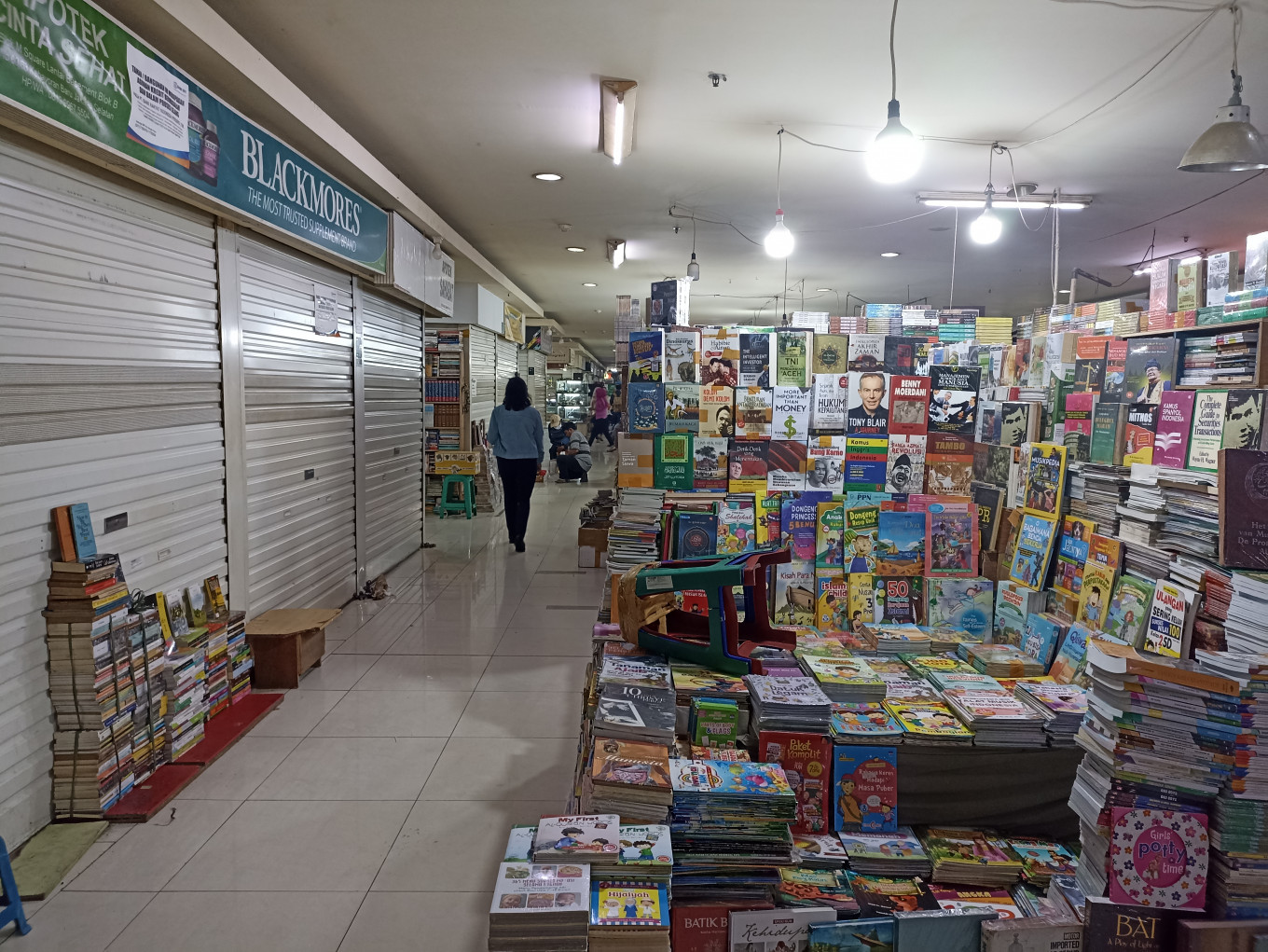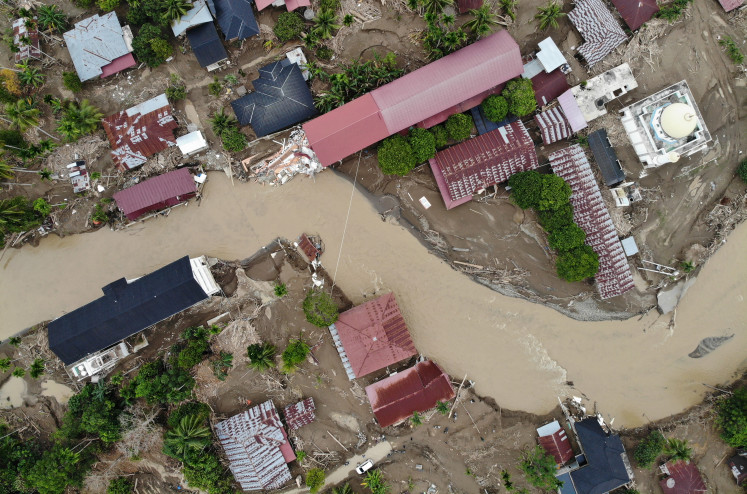Popular Reads
Top Results
Can't find what you're looking for?
View all search resultsPopular Reads
Top Results
Can't find what you're looking for?
View all search resultsReversing COVID-19 impact, rebuilding economies in Asia
The pandemic has exposed significant weaknesses in existing healthcare systems in many countries of Asia-Pacific due to many years of underinvestment in public health.
Change text size
Gift Premium Articles
to Anyone
T
he COVID-19 pandemic has left massive scars on societies and economies in Asia. Asia-Pacific countries were poorly prepared to face COVID-19, with 36 percent of its citizens lacking access to healthcare, 57 percent lacking access to social protection and 51 percent of workers having no formal labor rights.
While full economic and social costs have yet to be determined, some initial estimates indicate that over 1.5 million people have lost their lives, and 150 million people have been pushed into poverty. The gains made in recent years in poverty reduction, decline in inequality have been wiped out.
Among other factors, rising unemployment, reduced household incomes, food inflation, crowding out of government equity-enhancing spending, loss of schooling and learning opportunities, glaring digital divide, loss of remittances contributed to the increase in poverty and inequality.
Pandemic have pushed 90 million people into extreme poverty based on the US$1.90-per-day and over 150 million and 170 million under the $3.20 and $5.50 poverty line, respectively, by 2021, in the developing countries of the Asia-Pacific. These increases have brought the total number of people living in extreme poverty to more than 500 million, and those living in poverty to more than 1.4 billion.
World Bank surveys indicate that the region’s income inequality is likely to have risen on an average by 8 percent during the COVID-19 pandemic. Between-country inequality rose by 1.2 percent between 2017 and 2021, the first such increase in a generation, income inequality within countries has also increased in many countries. Wealth inequality has also grown during COVID-19. In 2021, the top 1 percent held a fifth of wealth in all countries in Asia, and over 25 per cent in 18 countries.
COVID-19 containment measures led to widespread job losses and rising unemployment. In 2020, there was 7.9 percent reduction in working hours, equivalent to 140 million job losses. Job losses and quarantines hit poor and low-income households.
Informal workers being more vulnerable to social distancing and lockdown measures, and high shares of women working in the informal sector, the pandemic has worsened gender inequality.
Women in the region were already taking disproportional care responsibilities, they spent 11 hours per day on an average on unpaid care and domestic work. The pandemic-related lockdowns, closures of businesses and schools and mobility restrictions have led women to spend more time on unpaid domestic activities.
Job losses, shutting down of small businesses, disruptions to the supply chains and reverse migration contributed to the loss of household incomes. It was estimated that the labor income was declined at 13.4 percent for South Asia, 5.0 percent for Southeast Asia and the Pacific, and 4.1 percent for East Asia in 2021. 83 percent, 70 percent, 55 percent, 75 percent and 48 percent of households in Cambodia, Vietnam, the Philippines, Thailand, and Laos reported falls in income, respectively.
Food prices in July 2022 increased by 7-9 percent in India, Indonesia, Malaysia, Nepal, the Philippines, and Thailand, 20-22 percent in Kazakhstan, Laos and Mongolia, 29 percent in Pakistan and 91 percent in Sri Lanka, compared with the same month in 2021. As the poor and low-income households spend a disproportional share of budget on food, they have been hit particularly hard.
The pandemic and rising food price inflation have worsened food security in Asia-Pacific. In 2021, hunger affected 425 million people in Asia. Overall, in the region, an estimated 1.1 billion people experienced moderate or severe food insecurity in 2020.
The effects of pandemic may stay for long. For example, the loss of learning opportunities because of school closures, affecting millions of students especially from poor and vulnerable households, exacerbated by the digital divide, will take many years to be compensated, if ever.
Connecting with internet enables workers to work from home and kids to access online education. However, this luxury was not available to many. Not having access to internet denied timely access to public services including benefits, work options and e-learning opportunities.
Governments in the region responded the crisis according to their fiscal space in 2020 and 2021. These measures included direct cash transfers, subsidies on food, subsidies on utility charges, grants to firms under workers retention schemes, support to SMEs to withstand the economic shocks, increasing health spending, extending subsidized loans to households and firms, tax credits/reduction and delay in collecting taxes. Given the impact of crises, the responses were not compatible to the losses.
The pandemic has exposed significant weaknesses in existing healthcare systems in many countries of Asia-Pacific due to many years of underinvestment in public health. There has been a lack of health facilities, trained medical professionals, medical equipment, testing facilities and medicines. Majority of people pay out of their pocket to get essential medical services.
Across the region, social protection systems are not equipped to provide adequate responses to economic and social shocks brought about by the pandemic. Majority of populations were excluded in the existing social protection programs. Large majority of those excluded from the social protection programs were informal workers. In the light of this, it is critical for all the government take following actions while rebuilding the post-COVID economies to tackle rising poverty and inequality:
- Increase investment in public health systems to prepare for any future health crises, by building more hospitals, training more doctors and nurses, and making available more medical equipment, and striving to achieve universal health coverage.
- Expand the scope and coverage of social protection to achieve universal access. Social protection programs should include all informal workers. The programs should go beyond pensions and cover unemployment, healthcare, and protection of injuries.
- Invest more in the public education system to create equal opportunities and making up for the lost schooling years. Reducing and eliminating the digital divide by providing affordable and subsidized access to the internet is also essential.
- End gender discrimination by providing more employment opportunities to women, women’s economic and political empowerment, and increased investment in care infrastructure and services to reduce disproportional care responsibilities of women.
- Asia-Pacific is highly vulnerable to climate change. Therefore, given the opportunity of rebuilding post COVID-19 economies, countries must expedite the transition to renewable energy sources, invest in climate adaptation and achieve their carbon emission reduction targets.
- Take concrete policy measures in taxation to increase revenue to fund social protection and public services. These may include introducing taxes on capital gains, properties, and inheritance; reducing exemptions and incentives; levying “solidarity taxes” on the rich and “windfall taxes” on companies profiting from oil prices, and ensuring multinational corporations pay fair taxes by reducing harmful tax practices and tax avoidance. Introduce wealth taxes, both as one-off emergency measures and on a recurrent basis as ongoing redistributive policies.
***
The writer is regional advocacy and campaigns lead at Oxfam International.











